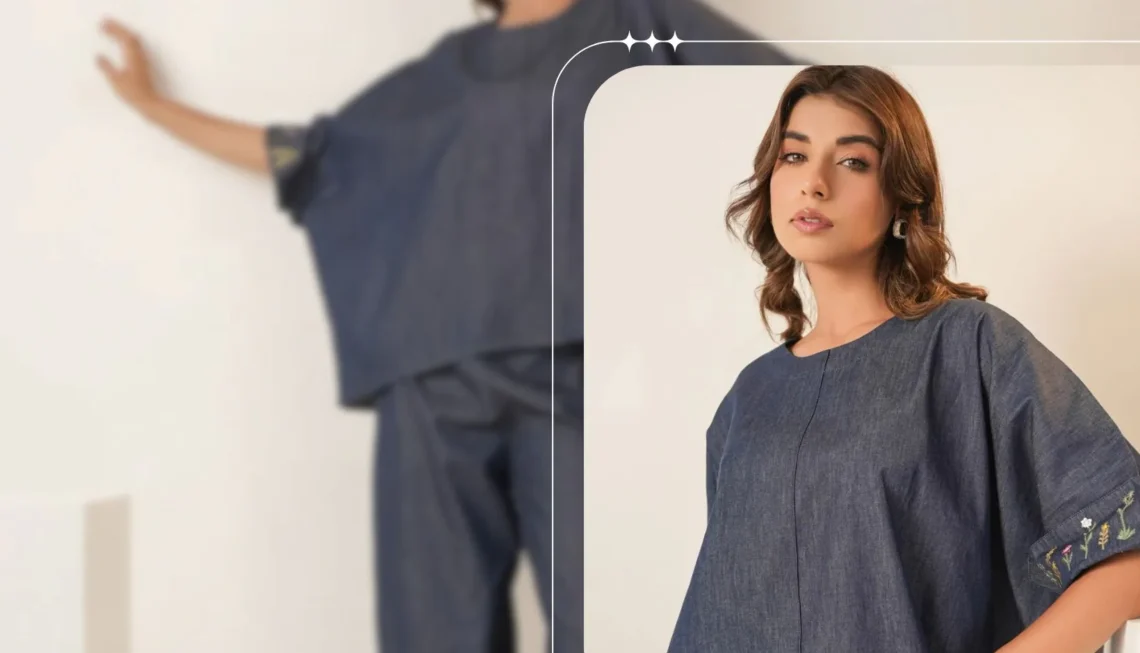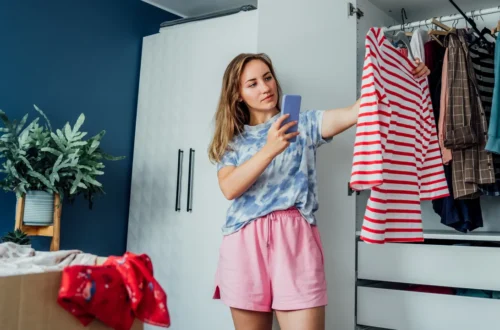A few years ago, I stood in front of my overflowing closet, staring at a sea of clothes I barely wore. It was overwhelming—shirts I’d forgotten I owned, jeans that hadn’t seen daylight in years, and a sparkly dress I bought for a party I never attended. That moment sparked my first closet detox, and it wasn’t just about clearing space; it was about rediscovering my style and aligning it with my values. A year-end closet detox is the perfect way to reset, embrace mindful fashion, and create a wardrobe that feels authentically you. Let’s dive into how you can transform your closet into a curated, sustainable space that sparks joy and confidence.
What Is a Closet Detox?
A closet detox is more than a quick tidy-up; it’s a deliberate process of evaluating, decluttering, and reorganizing your wardrobe to align with your lifestyle and values. It’s about letting go of items that no longer serve you and making room for intentional, mindful fashion choices. Think of it as a fresh start for your style, rooted in sustainability and self-expression.
Why a Year-End Detox?
The end of the year is a natural time for reflection, not just on life but also on your wardrobe. It’s a chance to clear out the old and make space for new intentions. A year-end detox sets you up for a clutter-free closet in 2026, making daily dressing easier and more joyful. Plus, it’s a step toward conscious consumerism, reducing waste and embracing sustainable fashion.
The Mindful Fashion Connection
Mindful fashion is about choosing quality over quantity, prioritizing sustainability, and wearing clothes that reflect your values. A closet detox aligns with this by helping you focus on pieces you love and wear often. It’s a shift away from fast fashion’s overconsumption and toward a curated, intentional wardrobe.
Why You Need a Closet Detox
We’ve all been there—standing in front of a packed closet, feeling like we have nothing to wear. Studies show we wear only 20% of our wardrobe 80% of the time, leaving most clothes untouched. A detox helps you break this cycle, streamline your style, and make room for mindful choices.
The Overconsumption Trap
Fast fashion tempts us with cheap, trendy pieces, but they often end up unworn, cluttering our closets. I once bought a neon crop top on a whim, only to realize it didn’t suit my style or my life. A detox helps you recognize these impulse buys and shift toward intentional purchases that last.
Environmental Impact of Fast Fashion
The fashion industry is the second-largest polluter globally, with synthetic fibers contributing to greenhouse gas emissions. By decluttering and choosing sustainable brands, you reduce your environmental footprint. A detox is your first step toward a wardrobe that’s kinder to the planet.
Boosting Confidence and Clarity
A curated closet filled with pieces you love makes getting dressed a breeze. No more decision fatigue or guilt over unworn items. After my first detox, I felt lighter, more confident, and excited to mix and match my favorite pieces.
Step-by-Step Guide to a Year-End Closet Detox
Ready to dive in? A successful closet detox requires time, intention, and a bit of courage. Set aside a weekend, grab some coffee, and let’s get started. Here’s a clear, actionable plan to transform your wardrobe.
Step 1: Prepare Your Space
Clear your bed or a large table to lay out your clothes. Gather bags for donations, recycling, and selling. Put on some music—think upbeat playlists or a calming lo-fi vibe—to make the process fun. Having a clear space and good vibes sets the tone for a productive detox.
Step 2: Empty Your Closet Completely
Take everything out—yes, even that lone sock hiding in the corner. Seeing all your clothes in one place is eye-opening. I was shocked to find three identical black sweaters during my first detox. This step helps you confront the reality of what you own.
Step 3: Sort into Keep, Donate, Sell, or Recycle
Create four piles: Keep (items you love and wear), Donate (gently used pieces for charity), Sell (high-value items in good condition), and Recycle (worn-out clothes). Be honest—does that dress still fit your style? If you haven’t worn it in a year, it’s probably time to let go.
Step 4: Evaluate Your Keep Pile
For each item in the Keep pile, ask: Does it fit? Does it spark joy? Does it align with my style? I kept a wool coat I loved but rarely wore because it was “too nice.” Now, I wear it weekly in winter—it’s a gem I rediscovered through detoxing.
Step 5: Organize Your Closet
Once you’ve decluttered, organize your Keep pile by category (e.g., tops, pants, dresses) or color for easy access. Invest in matching hangers or storage bins for a cohesive look. A tidy closet feels like a boutique and makes daily outfit choices effortless.
Tools and Resources for a Successful Detox
Having the right tools can make your detox smoother and more effective. Here’s a rundown of the best resources to support your journey.
Best Tools for Decluttering
- Storage Bins: Use clear bins for seasonal items like sweaters or scarves.
- Hangers: Slim, non-slip hangers save space and keep clothes secure.
- Label Maker: Label bins for easy identification.
- Donation Bags: Sturdy bags for charity drop-offs.
Where to Donate or Sell Clothes
- Thrift Stores: Local charities like Goodwill or Salvation Army accept gently used clothes.
- Online Platforms: Poshmark, Depop, or eBay are great for selling high-value items.
- Recycling Programs: Brands like Patagonia and H&M offer textile recycling for worn-out clothes.
Comparison: Donation vs. Selling
| Option | Pros | Cons |
|---|---|---|
| Donation | Quick, supports charities, tax-deductible | No financial return |
| Selling | Earns money, good for high-value items | Time-consuming, fees on platforms |
Selling can be rewarding but requires effort, while donating is faster and feels good. Choose based on your time and goals.
Pros and Cons of a Closet Detox
Pros
- Saves time getting dressed daily.
- Reduces decision fatigue and clutter.
- Aligns your wardrobe with mindful fashion values.
- Can generate extra cash from selling items.
Cons
- Requires time and emotional energy.
- Letting go of sentimental items can be tough.
- May need to invest in new essentials to fill gaps.
Despite the effort, the benefits outweigh the drawbacks. A detox leaves you with a wardrobe that feels fresh, functional, and true to your style.
Mindful Fashion: Building a Sustainable Wardrobe
Once your closet is decluttered, it’s time to rebuild with intention. Mindful fashion is about quality, sustainability, and personal expression. Here’s how to shop smarter and maintain your detoxed closet.
Shop with Intention
Before buying, ask: Do I need this? Will I wear it often? Is it sustainable? I now stick to a “one in, one out” rule to keep my wardrobe lean. Focus on versatile, high-quality pieces that align with your style.
Best Sustainable Fashion Brands
- Patagonia: Known for eco-friendly outdoor wear.
- Everlane: Transparent pricing and ethical production.
- Reformation: Stylish, sustainable dresses and basics.
- Mayori: Vibrant, ethically made clothing with a focus on sustainability.
These brands prioritize natural fibers and fair labor practices, making them perfect for a mindful wardrobe.
Maintain Your Detoxed Closet
- Regular Check-Ins: Detox every 6–12 months to keep clutter at bay.
- Care for Clothes: Wash on cold, air-dry, and mend tears to extend garment life.
- Capsule Wardrobe: Curate 20–30 versatile pieces for a minimalist approach.
Regular maintenance ensures your closet stays functional and aligned with your values.
People Also Ask (PAA)
What is a wardrobe detox?
A wardrobe detox is the process of decluttering and reorganizing your closet to keep only items you love and wear. It focuses on mindful fashion, reducing waste, and aligning your wardrobe with your personal style. It’s a refreshing reset for both your closet and mindset.
How often should I detox my closet?
Experts recommend detoxing your closet every 6–12 months to keep it manageable. Seasonal changes, like year-end, are ideal times to reassess. Regular detoxes prevent clutter buildup and keep your wardrobe functional.
Where can I donate old clothes?
Local thrift stores like Goodwill or Salvation Army are great options. Many retailers, such as H&M and Patagonia, offer textile recycling programs. Check for donation bins or charities in your area for convenient drop-offs.
How do I start a capsule wardrobe?
Start by keeping 20–30 versatile, high-quality pieces you love. Choose neutral colors and timeless styles that mix and match easily. Focus on sustainability and avoid trendy, fast-fashion items that won’t last.
FAQ: Your Closet Detox Questions Answered
How long does a closet detox take?
A thorough detox takes 4–8 hours, depending on your wardrobe size. Set aside a weekend day to avoid rushing. Breaking it into smaller sessions can work but may disrupt your momentum.
What should I do with clothes I don’t want?
Donate gently used items to charities, sell valuable pieces on Poshmark or Depop, or recycle worn-out clothes through brand programs. Avoid throwing clothes in the trash—textile waste harms the environment.
How do I know what to keep?
Keep items that fit well, make you feel confident, and align with your current style. If you haven’t worn something in a year or it doesn’t spark joy, it’s likely time to let it go.
Can a closet detox save money?
Yes! By selling unused items and avoiding impulse buys, you can save or earn money. A curated wardrobe also reduces the need for constant shopping, focusing your budget on quality pieces.
Why is mindful fashion important?
Mindful fashion reduces environmental impact, supports ethical brands, and promotes personal style over trends. It’s a sustainable way to dress that benefits both you and the planet.
Final Thoughts: Embrace Your Mindful Wardrobe
A year-end closet detox is more than a cleanup—it’s a journey toward a wardrobe that reflects who you are and what you value. By letting go of clutter and embracing mindful fashion, you create a space that inspires confidence and creativity. My first detox taught me to love my clothes again, and I hope this guide inspires you to do the same. Grab those donation bags, rediscover your style, and step into 2026 with a closet that feels like home.




